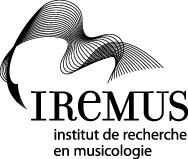WRITINGS
/ Jeremy Corral
/ Pratiques et esthétique de la musique pour bande japonaise : le cas du studio de musique électroniaue de la NHK (1952-1970) / Practice and Aesthetics of Japanese Tape Music: A Case Study of the NHK Electronic Music Studio (1952-1970)
Edition: PhD thesis, Inalco (French National Institute for Oriental Languages and Civilizations)
Date: 2021
Region: FRANCE
Origin: FRANCE
Type of media: PhD thesis
Language: French
Editor: Jeremy Corral
Comment:
Abstract:
In Japan, the first musical experiments made on magnetic tapes take place in 1952 in the NHK premises.
From 1955, the implementation of physical and radiophonic spaces dedicated to this music in gestation is
testimony to a certain will to install at this very place a part of the rudiments of an utterly radical musical
modernity. Thereby, what will later be known as the « NHK electronic music studio », modeled with the
NWDR studio founded in 1951 in Cologne in mind, allows many composers to gain access to new
technologies and to challenge new methods tested in the course of a dialogue maintained with the Western
production. Even though the studio is strictly contemporary to other institutions of the genre in Europe, the
Japanese tape music production remains however largely ignored, and no historiographical work undertaken
with the help of art history and contemporary music history had been proposed yet. Subsequently, the
relations that composers had with the Western creation, but also with the idea of national modernity –
torned between a certain conception of the tradition to perpetuate and a certain conception of the social
reality whose international aspect has to be expressed in sincere means – stay obscure. While following a
diachronic progression of the art in question, the present work will be about examining the connection
Japanese composers developed with foreign texts in order to apprehend the theoretical material and the
perceptive effects of music, then the critical disposition of the said composers regarding the local production
at a time when exchanges with the international scene were more direct. Lastly this study will consider how
the measures taken by the direction of the studio and the musicians to valorise the Japanese work led to the
building of an essential gap with the Western creation.





